Digital Poster
Stroke: Perfusion Imaging
ISMRM & ISMRT Annual Meeting & Exhibition • 10-15 May 2025 • Honolulu, Hawai'i

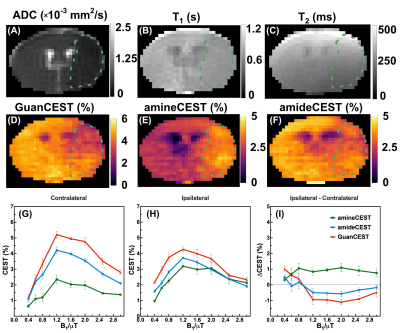 |
Computer Number: 97
2516. Brain
Metabolic Alteration in Two Mouse Stroke Models: a Multi-field
Comparison via Chemical Exchange Saturation Transfer (CEST) MRI
K. Wang, L. Ju, G. Qiao, Y. Liang, Y. Wu, C. Chu, J. Rogers,
Y. Li, S. Cao, V. Dawson, T. Dawson, P. Walczak, J. Xu
Johns Hopkins University, Baltimore, United States
Impact: Simultaneous monitoring of brain metabolites,
neurotransmitters, and pH levels will advance understanding
and treatment of ischemic stroke and other metabolic brain
diseases, positioning chemical exchange saturation transfer
(CEST) MRI as a promising tool.
|
|
 |
Computer Number: 98
2517. Development
and Validation of a Multiomics Model Using Clinical and
Radiomics Features for Predicting Hemorrhagic Transformation in
Stroke
Y. H. Roh, E-N Cheong, S. C. Jung, K. M. Choi
Samsung medical center, Seoul, Korea, Republic of
Impact:
The multiomics model, integrating clinical and radiomics features, improves the prediction of HT. These models could assist clinicians in making more informed decisions for managing patients with acute ischemic stroke. |
|
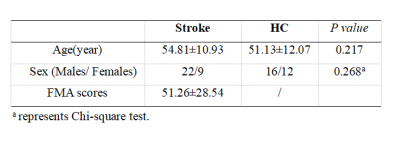 |
Computer Number: 99
2518. Dynamic
Reconfiguration of Brain Functional Network in Hemiplegic Stroke
X. Liu, C. Yu, Y. Ge, Y. Shen, M. Wang, K. Li, X. Zhang, M.
Wang
Zhengzhou University People's Hospital, Zhengzhou, China
Impact: This study offers a new perspective on dynamic
functional network reconstruction in hemiplegic stroke
patients, revealing the connection between brain functional
remodeling and motor impairments, thereby offering valuable
evidence for guiding future clinical interventions.
|
|
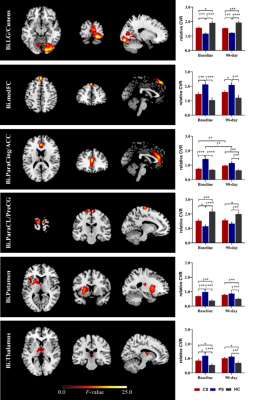 |
Computer Number: 100
2519. Neuroplasticity
associates with glymphatic dysfunction during recovery after
capsular and pontine stroke
Y. Bian, J. Zhang, Y. Zhang, H. Zhang, X. Jia, Q. Yang
Beijing Chaoyang Hospital, Beijing, China
Impact: Negative, long-term, and bidirectional
associations between neuroplasticity and glymphatic
dysfunction were observed in stroke patients during
recovery. The negative characteristics suggested that
neuroplasticity might cause glymphatic dysfunction, and the
long-term, bidirectional characteristics suggested a
sustained mutual influence during stroke recovery.
|
|
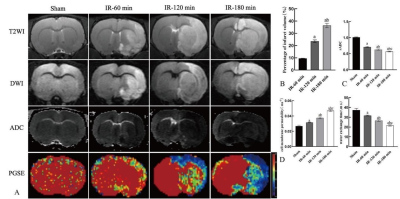 |
Computer Number: 101
2520. Multiparametric
MRI assessment of neuronal vascular unit destruction in rats
after cerebral ischemia reperfusion injury
X. Wang, X. Wang, H. Zhang, Z. Li, S. Hu, X. Zhang, Y. Qin,
Y. Cheng, P. Wu
Medical Imaging Center, Affiliated Hospital of Shandong Second Medical University, Weifang, China
Impact: The pathological hallmarks of acute ischemic
stroke (AIS) are NVU damage and BBB destruction, and its
clinical treatment has shifted from single neuron protection
to NVU protection, which has become a new target for
studying neuronal damage and protection mechanisms.
|
|
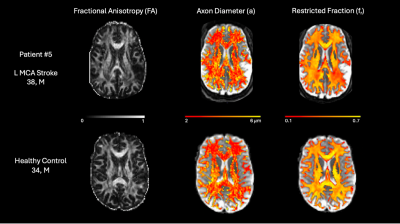 |
Computer Number: 102
2521. Characterizing
axonal damage in ischemic stroke using AxCaliber MRI in
high-gradient diffusion imaging
A. Bhatt, L. Shu, D. Lin, S. Huang
Athinoula A. Martinos Center for Biomedical Imaging, Department of Radiology, Massachusetts General Hospital, Boston, United States
Impact: AxCaliber-SMT applied to high-gradient diffusion
MRI data offers a novel approach to probe axonal
microstructural alterations following ischemic stroke and
may aid in developing a sensitive imaging marker for
evaluating rehabilitation strategies.
|
|
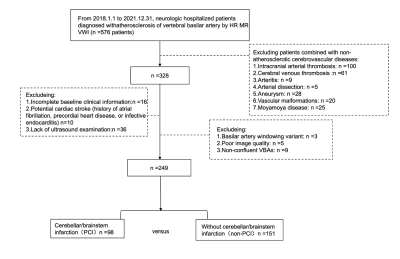 |
Computer Number: 103
2522. Vessel
wall imaging of vertebrobasilar artery configurations:
associations with posterior circulation infarction in
atherosclerosis
J. Xiong, L. Mei, C. Zhang, X. Qu, J. Wu
Tianjin Medical University, Tianjin, China
Impact: Finding of this study will contribute to the
stratification of stroke risk and significantly impact on
clinical guidelines and treatment protocols for stroke
prevention and management. Ultimately, this will be a step
towards accurate diagnosis and treatment of PCI.
|
|
 |
Computer Number: 104
2523. Myelin
quantity in a normal-appearing regions as a prognostic factor 3
months post ischemic stroke
C-W Kim, D. Kim, J. Lee, J. Lee, D. Y. Kim, J. Y. Choi
Yonsei University, Wonju, Korea, Republic of
Impact: Identifying non-lesion MEV as a predictor for
stroke recovery aids in prognosis and guides personalized
post-stroke management for improved patient outcomes.
|
|
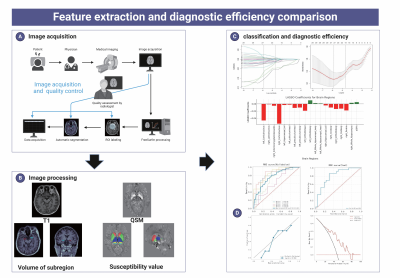 |
Computer Number: 105
2524. Diagnostic
Model for Cerebral Small Vessel Disease Based on Subregional
Volumes and Quantitative Susceptibility Mapping
Z. Cheng, L. Yang, C. Liang, M. Li, X. Li, Y. Chen, L.
Pengcheng, W. Yuanyuan, N. Wang, X. Zhang, L. Guo
Binzhou Medical University, YAN TAI, China
Impact: These findings suggest that the combination of
radiomic features and cognitive tests can improve the
quantitative diagnosis of CSVD at an early stage, and
provide an important theoretical basis and practical method
for accurate diagnosis and early intervention.
|
|
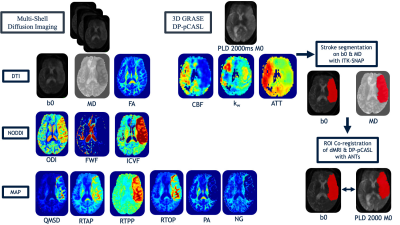 |
Computer Number: 106
2525. Use
of Multi-Modal Non-Contrast MRI to Predict Functional Outcomes
after Stroke: a study using DP-pCASL, DTI, NODDI, and MAP MRI
J. Diamandi, C. Raimondo, K. Piper, J. Roy, M. Alizadeh, A.
Flanders, S. Tjoumakaris, R. Gooch, P. Jabbour, R.
Rosenwasser, N. Mouchtouris
University of Pittsburgh School of Medicine, Pittsburgh, United States
Impact: This study demonstrates kw‘s
potential as a functional outcome predictor in patients with
AIS.CBF, QMSD, and RTAP, SD RTAP and NG were predictors of kw.
Larger studies are needed tounderstand these relationships
and kw‘s
usefulness in clinic settings.
|
|
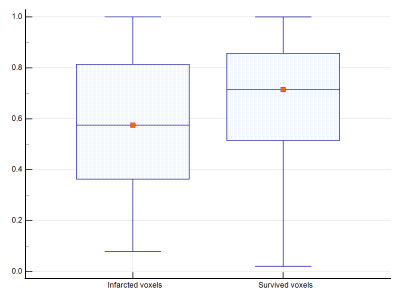 |
Computer Number: 107
2526. MRI
OEF and CMRO₂ in Predicting Ischemic Lesion Survival in Acute
Stroke: New insight on Diffusion Reversibility
M. Asghariahmadabad, P. Metanat, E. Tavakol, A. Ismail, M.
Bahr-Hosseini, V. Szeder, G. Colby, J. Saver, D. Liebeskind,
V. Yedavalli, W. Smith, A. Kim, C. Halabi, N. Ko, A.
Sreekrishnan, S. Josephson, K. Narsinh, L. Savastano, S.
Hetts, C. Hess, K. Nael
University of California San Francisco, San Francisco , United States
Impact: Pretreatment MR OEF and CMRO₂ markers in AIS
patients can predict diffusion reversibility within the
estimated ischemic core. This approach can refine the
ischemic core assessment for reperfusion therapy selection
and potentially improving clinical outcomes through tailored
treatment strategies.
|
|
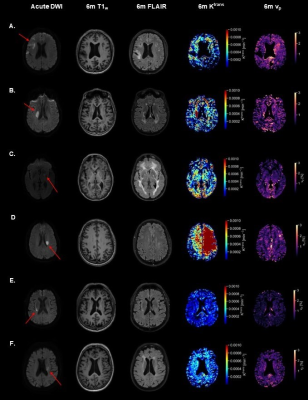 |
Computer Number: 108
2527. DCE-MRI
measures of BBB permeability 6 months after clinical ischaemic
stroke
O. Jones, Z. Biesiada, H. Haroon, T. Grundy, A. Greenhalgh,
O. Thomas, B. Dickie, S. Allan, C. Smith, M. Buckwalter, L.
Parkes
University of Manchester, Manchester, United Kingdom
Impact:
Our characterisation of DCE-MRI measurements of BBB permeability 6 months after clinical ischaemic stroke contributes to the understanding of vascular and immune pathophysiology in the months after stroke and its potential relationship with cognitive decline in the years after stroke. |
|
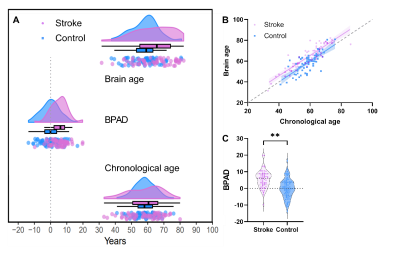 |
Computer Number: 109
2528. Impaired
glymphatic system, accelerated brain aging, and their
interconnections in ischemic stroke patients within one week
Y. Li, H. Su, H. Wan, W. Zhu
Tongji Hospital, Tongji Medical College, Huazhong University of Science and Technology, Wuhan, China
Impact: the study give a new perspective on stroke that
Ischemic stroke impairs glymphatic system function, which
may contribute to accelerated brain aging during the early
period
|
|
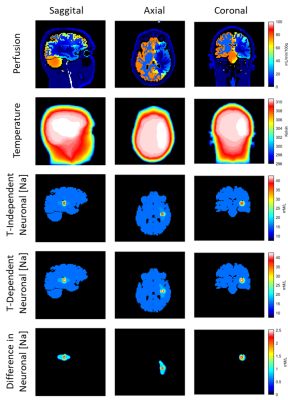 |
Computer Number: 110
2529. Towards
Multiscale, Multiphysics In Silico Simulations of Cerebral
Ischemia
D. Brantner, T. Ventimiglia, G. Carluccio, S. Dehkharghani,
A. Linninger, C. Collins
NYU Langone School of Medicine, New York, United States
Impact: Multiphysics, multi-scale 4D numerical models
can provide a platform for improved mechanistic
understanding of disease process and evaluation of potential
treatments of ischemic stroke. This will complement and
augment information available from imaging in clinical and
preclinical studies.
|
|
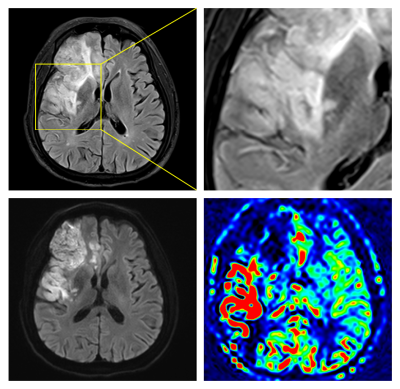 |
Computer Number: 111
2530. Association
of post-treatment hyperperfusion with fluid-attenuated inversion
recovery vascular hyperintensity in stroke patients
W. Ni, G. Shen, Z. Yin, G. Ma, Y. Chu, S. Lu, X. Xu, F. Wu
Jiangsu Provincial Hospital (The First Affiliated Hospital of Nanjing Medical University), Nanjing, China
Impact: Our study helps to determine whether FVH can
serve as an imaging marker of post-treatment perfusion in
AIS patients, enabling rapid assessment of perfusion in the
absence of hemodynamic imaging, influencing therapeutic
decisions, and optimizing patient outcomes.
|
|
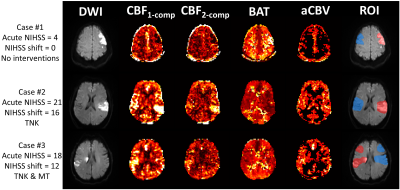 |
Computer Number: 112
2531. MR
Fingerprinting perfusion imaging in acute ischemic stroke:
predictive utility for neurological outcomes
Z. Hu, A. Tenberg, D. Jiang, W. Shi, A. E. Hillis, M.
Bahouth, V. Yedavalli, H. Lu
Johns Hopkins University School of Medicine, Baltimore, United States
Impact: Our
results suggested that non-contrast MRF-ASL perfusion
imaging offers a comprehensive insight into perfusion
dynamics and may be predictive of neurological outcomes
after reperfusion therapy in AIS.
|
The International Society for Magnetic Resonance in Medicine is accredited by the Accreditation Council for Continuing Medical Education to provide continuing medical education for physicians.